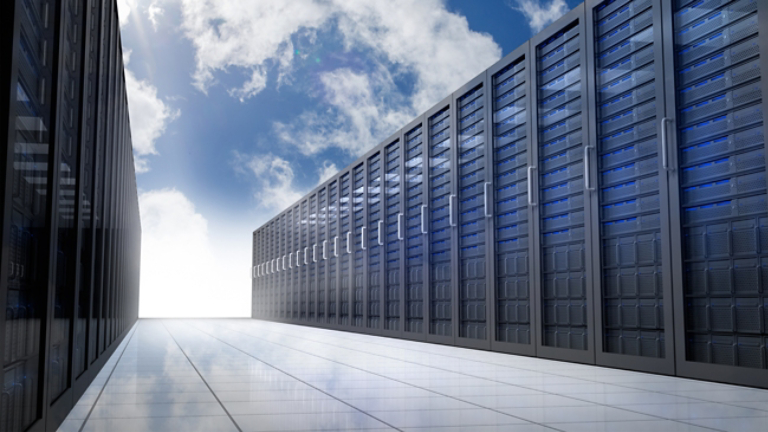Carbon Neutral Data Center Cooling: Striving for Sustainability in the Digital Age
As data center power demands increase, so does the potential for significant increases in carbon emissions. Cooling remains one of the most energy-intensive aspects of data center operations.
With careful design strategies and the latest technology, it is possible to reduce data center carbon emissions and better integrate with the existing utility grid.
The Challenge of Carbon Neutral Data Centers
Data center carbon emissions are directly linked to the carbon footprint of its power source. A data center powered by a utility that exclusively uses hydroelectric or nuclear fission generation could achieve carbon neutral cooling relatively easily. Unfortunately, most data centers are not situated in such favorable locations.
Achieving carbon neutral cooling instead requires a comprehensive approach that includes high-efficiency cooling systems, advanced control techniques, and the integration of renewable energy sources.
These data centers can achieve net-zero carbon emissions through energy storage or by providing excess renewable electricity back to the utility grid when available.
On-Site Renewable Energy & Data Center Energy Storage
On-site renewable energy sources, such as solar panels and wind turbines, can provide electricity that is carbon neutral. However, these sources rarely provide a stable and consistent supply of electricity that aligns perfectly with the data center's needs. To address this challenge, excess electricity generated by renewables can be provided to the utility grid or used to charge energy storage systems.
The most effective way to store energy for later cooling is thermal energy storage (TES). Chilled water tanks or more energy-dense ice storage tanks can be charged when carbon-free electricity is available and then readily provide cooling when renewable production is low.
While thermal energy storage cannot provide the electricity needed for controls and pumps, it can offset cooling energy usage from energy production, making it possible to utilize renewable sources even when they are not generating energy.
While very effective, thermal energy storage requires significant physical space to provide cooling over long periods, such as overnight, when solar is not available.
High-Efficiency Cooling Systems and Advanced Controls
Minimizing energy usage is paramount in reducing data center carbon emissions. High-efficiency cooling systems, such as high-efficiency chillers and liquid cooling technologies, can significantly reduce the energy required for cooling. Further improvements to the system's efficiency require better control systems.
AI Control for Cooling Systems
Artificial Intelligence (AI) can play a crucial role in optimizing data center cooling systems. AI algorithms can predict cooling needs based on historical data and real-time monitoring, allowing for more precise control. However, many data centers have dynamic loads that are difficult to predict. This highlights the importance of syncing the compute load to the cooling plant in real-time.
Synchronize Cooling with Compute Load
Cooling equipment should be synchronized with the compute load of the data center. Energy usage can be optimized by aligning cooling efforts with periods of high computational activity.
During periods of low computational requirements, thermal energy storage can be charged for later use. This synchronization requires active monitoring and constant communication of compute loads to the control systems that dynamically adjust equipment operation based on this real-time data.
Careful Coordination and Staging of Cooling Systems
Effective coordination of cooling equipment is essential. Staging and loading equipment to maximize operating efficiency can lead to significant energy savings. For instance, using a combination of free cooling and mechanical cooling can reduce the cooling energy intensity. AI control and compute load synchronization allow preemptive staging.
Purchasing Carbon Offsets
When on-site renewables and high-efficiency systems are insufficient to achieve carbon neutral cooling, purchasing carbon offsets can be a viable solution. Investing in projects that reduce or capture carbon emissions elsewhere can offset the carbon footprint.
Carbon offsets can help achieve carbon neutral cooling in data centers that are unable to provide sufficient on-site renewables.
The Future of Carbon Neutral Data Center Cooling
The journey toward carbon neutral data center cooling is not easy, but it is possible. It requires a combination of high-efficiency cooling plants, advanced control systems, thermal energy storage, on-site renewable energy sources, and carbon offsets. While challenging, it is a crucial step to a more sustainable future.
As technology continues to evolve, we can expect further advancements in cooling efficiency and renewable energy integration. Maybe in the not-too-distant future, each data center will be powered by a dedicated Helium-3 fusion reactor, providing gigawatts of zero- emission electricity. Until then, we must leverage the best available technologies and strategies to minimize the carbon footprint of data center cooling.
By adopting a holistic approach, we can significantly improve data center sustainability. This will help mitigate the environmental impact of our digital age, ensuring support for our growing need for high-compute density data centers.



